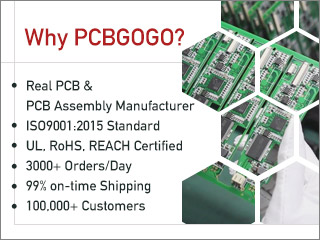PCB Warpage: Causes, Prevention and Remedies
In the electronics manufacturing world, Printed Circuit Boards (PCBs) are vital, but warpage remains a persistent issue. As technology moves toward smaller, more complex electronics, tackling PCB warpage grows increasingly important.
The Hazards of PCB Warpage
PCB warpage, the bending or twisting of the board, causes multiple problems. In surface-mount assembly, it leads to incorrect component positioning, resulting in poor connections, open or short circuits, costly rework, or product failure. In through-hole assembly, it hinders accurate component insertion, potentially damaging components, PCBs, or machinery.
Causes of PCB Warpage
Thermal Stress
Thermal stress is a key cause. During manufacturing like soldering and curing, PCBs face temperature changes. Different materials (substrate, copper, solder mask) have varying coefficients of thermal expansion (CTE), causing uneven expansion/contraction and internal stresses that warp the board.
Moisture Absorption
Exposure to humidity or improper storage makes PCBs absorb moisture. During reflow soldering, heat vaporizes moisture rapidly, leading to delamination, blistering, and warpage. High-density boards are especially vulnerable.
Unbalanced Copper Distribution
Uneven copper layout, with one side having much more copper, causes differential expansion/contraction, making the board bend. This is common in boards with large solid copper areas on one side.
Mechanical Stress
Rough handling, excessive force during assembly, or poor support during manufacturing can introduce permanent deformation and warpage.
Design Factors
Thin boards, high aspect ratio boards, poor component placement, and large cutouts/voids all increase warpage risk due to reduced rigidity or uneven stress.
Prevention of PCB Warpage
Board Design Optimization
Balanced Layer Design: Ensure symmetric layer arrangement in multi-layer boards, balancing copper layers and using consistent prepreg.
Copper Distribution: Even out copper with grid-like patterns instead of large solid areas to reduce thermal stress.
Component Placement: Strategically place components to avoid stress concentration and weight imbalance.
Material Selection
High-Tg Materials: Choose substrates with high glass transition temperature for better heat resistance, suitable for high-temperature processes.
Consistent Material Sources: Use core materials and prepregs from the same supplier to avoid property mismatches.
Manufacturing Process Control
Thermal Process Management: Control reflow soldering with optimized temperature profiles and slow cooling to minimize stress.
Moisture Management: Store PCBs in dry environments and bake if needed to remove moisture.
Mechanical Handling: Train operators, use proper fixtures, and calibrate machinery to prevent bending or stress.
Remedies for PCB Warpage
If warpage occurs, these measures can help, though prevention is better:
Thermal Pressing: Use heat and pressure on slightly warped boards, controlling temperature and pressure carefully.
Mechanical Straightening: Apply gentle pressure to low-level warpage, avoiding damage.
At PCBgogo, we know preventing PCB warpage is critical. Our experts design meticulously, use advanced manufacturing, select quality materials, and maintain strict quality control to deliver warpage-free PCBs meeting high performance and reliability standards for our customers.


